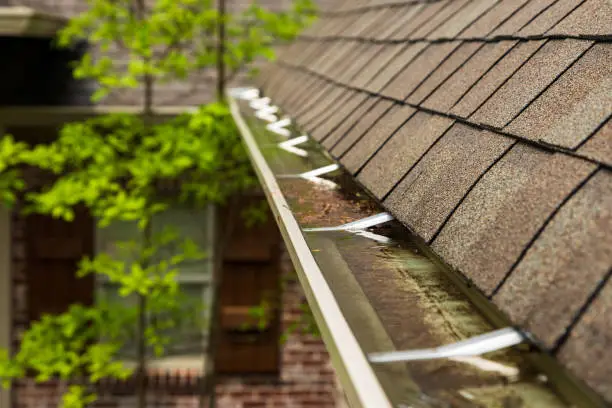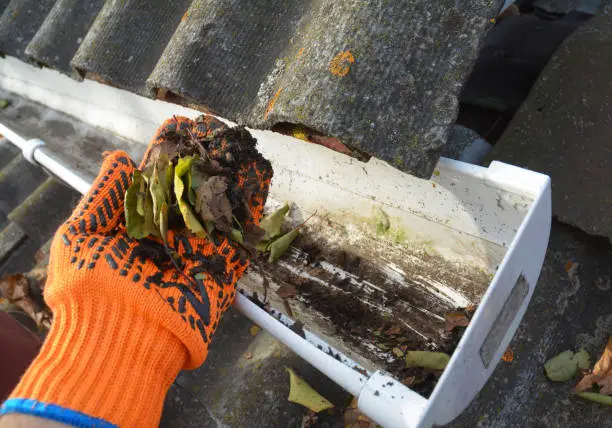Why Is Water Pooling in My Gutters? Causes, Risks, and Solutions
Introduction
Water pooling in gutters poses a significant threat to the integrity of your home. When gutters fail to direct water away from the structure, it can lead to various problems including water damage, mold growth, and even structural issues. The importance of gutters cannot be overstated; they play a crucial role in protecting the foundation, walls, and roof of your house.
Causes of Water Pooling in Gutters

Clogged Gutters
Clogged gutters are one of the most common culprits behind water pooling issues. Leaves, dirt, and other debris can accumulate over time, creating blockages that prevent water from flowing freely through the gutter system. When gutters become clogged:
- Debris Accumulation: The buildup of organic material such as leaves and twigs can cause significant obstructions.
- Water Overflow: Blocked gutters can lead to water spilling over the sides, pooling around the foundation.
Improper Pitch or Tilt
The pitch or tilt of your gutters is crucial for proper drainage. If gutters are not installed with the correct slope, water will not flow toward the downspouts as intended.
- Incorrect Slope: A gutter that is too flat or has an improper angle will cause water to stagnate.
- Pooling Areas: Specific sections may become prone to pooling if the pitch is inconsistent.
Proper installation ensures that water flows smoothly through the system without any hindrance.
Narrow Gutters
Gutters that are too narrow may struggle to handle heavy rainfall effectively. This limitation can result in overflow and pooling during intense weather events.
- Insufficient Width: Narrow gutters lack the capacity to manage large volumes of water.
- Heavy Rainfall Overflow: During heavy rain, these gutters can overflow quickly, leading to pooling around your home’s perimeter.
Considering appropriate gutter dimensions based on local climate conditions is essential for preventing this issue.
Poor Drainage Design
Inadequate planning during the construction phase can lead to poor drainage design, which exacerbates water pooling problems.
- Design Flaws: Poorly designed gutter systems may not channel water away efficiently.
- Foundation Risks: Improper drainage increases the risk of water accumulating around your home’s foundation.
Careful consideration of drainage design is vital for ensuring long-term effectiveness and protecting your property from potential damage.
Other Factors Contributing to Water Pooling Issues
Beyond the primary causes, other factors can lead to water pooling in your gutters:
Foundation Settling
Foundation settling occurs over time as the soil beneath home compacts or shifts. This gradual process can alter the grading around your property, leading to water accumulation near the foundation. When this happens, gutters may struggle to manage runoff effectively, resulting in standing water.
Landscaping Issues
Poorly designed landscapes can significantly impact drainage. Improper placement of plants, beds, or hardscaping features can obstruct natural water flow paths. This restriction can cause excess moisture to pool around your home’s perimeter, exacerbating gutter problems.
Addressing these additional factors is essential for maintaining effective gutter systems and preventing water damage to your home.
Risks Associated with Water Pooling in Gutters
Prolonged exposure to pooled water within gutter systems can lead to significant risks that compromise your home’s structural integrity and indoor air quality.
Structural Damage
- Roof Damage: Stagnant water increases the weight burden on gutters, potentially causing them to sag or detach. This can lead to roof damage, such as leaks and rot.
- Foundation Issues: Water pooling near the foundation can seep into the soil, leading to soil erosion and foundation settling. This compromises the stability of your home, resulting in cracks and uneven floors.
- Fascia Board Deterioration: Continuous exposure to water can deteriorate fascia boards, which are crucial for supporting gutters. Damaged fascia boards may lead to more extensive roofing issues.
Mold Growth
- Health Hazards: Stagnant water in gutters creates a breeding ground for mold and mildew. Mold spores can infiltrate your home’s ventilation system, posing respiratory risks like asthma and allergies.
- Compromised Indoor Air Quality: Mold growth within gutters affects the air quality inside your home. Poor indoor air quality is linked with various health issues, making it essential to address this problem promptly.
Addressing these risks is crucial for maintaining the structural integrity of your home and ensuring a healthy living environment. Taking proactive steps helps prevent long-term damage and costly repairs.
One effective way to mitigate these risks is by investing in professional gutter installation services that ensure proper drainage and reduce the chances of water pooling. Additionally, considering gutter guard installation can further protect your gutters from debris accumulation, which often leads to stagnant water. To learn more about how our team at Elite Services of Montgomery can assist you with these services, feel free to reach out!
Practical Solutions for Addressing Standing Water Problems in Gutters Effectively

Addressing standing water in gutters requires consistent maintenance and well-planned installations. Here are some practical solutions:
Regular Cleaning
Regular cleaning is crucial for preventing debris buildup that can lead to clogged gutters. Implementing seasonal gutter cleaning techniques ensures that your gutters remain free from leaves, twigs, and other obstructions. A few steps to consider:
- Spring Cleaning: After winter, inspect and clear any leftover debris using methods suited for a seamless gutter system.
- Summer Maintenance: Check for nests or blockages formed during spring.
- Fall Preparation: Remove fallen leaves to prepare for winter.
Installing Gutter Guards
Gutter guards can significantly reduce the frequency of clogs by preventing larger debris from entering the gutter system. These are available in various styles such as mesh screens, reverse curves, and foam inserts.
- Mesh Screens: Fine mesh that blocks debris while allowing water to flow through.
- Reverse Curves: Design that uses surface tension to direct water into the gutter while keeping debris out.
- Foam Inserts: Fits inside the gutter to filter out debris.
Checking Pitch and Tilt
Ensuring that your gutters have the correct pitch is essential for proper drainage. Ideally, gutters should slope 1/4 inch for every 10 feet towards the downspout. This simple adjustment can prevent water from pooling in specific areas.
Wider Gutters
For homes experiencing heavy rainfall, upgrading to wider gutters may be necessary. Standard 5-inch gutters might not suffice; consider installing 6-inch wide gutters to accommodate increased water flow.
By incorporating these proactive measures, you can effectively manage standing water in gutters and protect your home from potential damage.
When Should You Seek Professional Help?
There are certain situations where it’s best to call in the experts for gutter system inspection services. If you’ve tried fixing the problem yourself but still see water pooling, that’s a clear sign you need professional help.
You should also reach out to professionals if you notice any damage to your home’s structure, such as water stains on walls or ceilings, rotting fascia boards, or cracks in the foundation.
Key scenarios where hiring professionals becomes necessary:
- Persistent Pooling: Continual water accumulation even after cleaning and adjustments.
- Structural Damage: Visible signs like water stains, rot, or cracks around your home.
Bringing in professionals can ensure a comprehensive evaluation and effective solutions tailored to your specific issues.
Conclusion
Addressing pooling issues promptly is crucial. Regular maintenance and timely solutions can prevent the damaging effects of stagnant water in your gutters. By understanding the causes, risks, and practical solutions, you can effectively protect your home. Proactive measures such as regular cleaning, installing gutter guards, and ensuring proper drainage design are essential. If DIY efforts don’t resolve the issue or signs of structural damage appear, seeking professional help is necessary. Protecting your home from water damage starts with well-maintained gutters.
